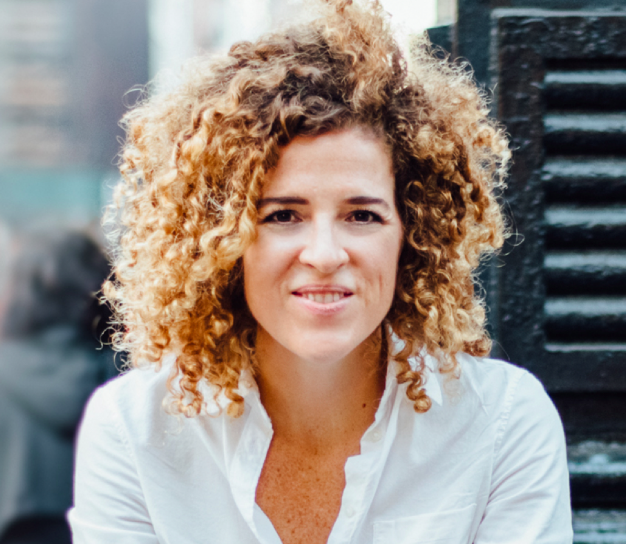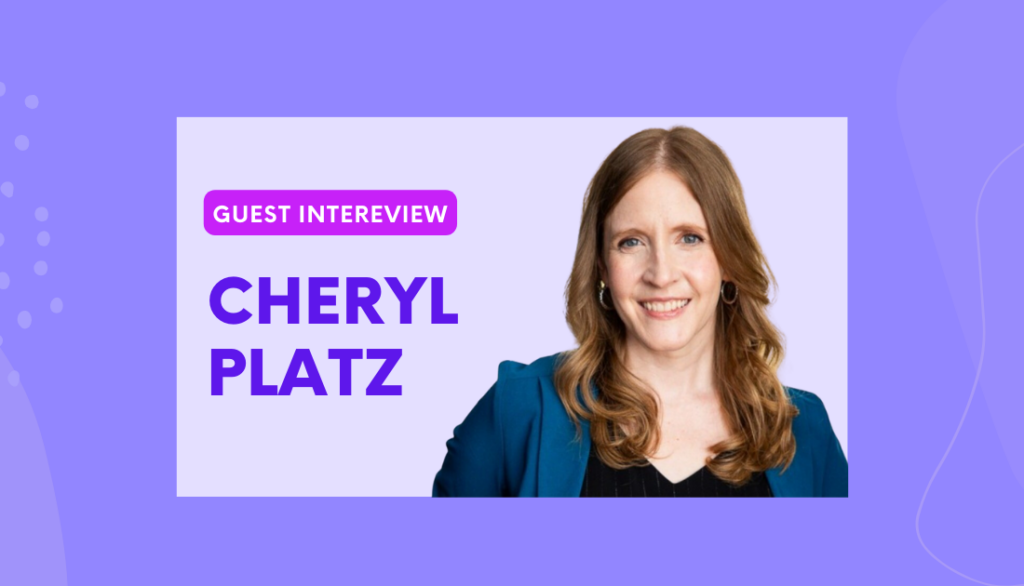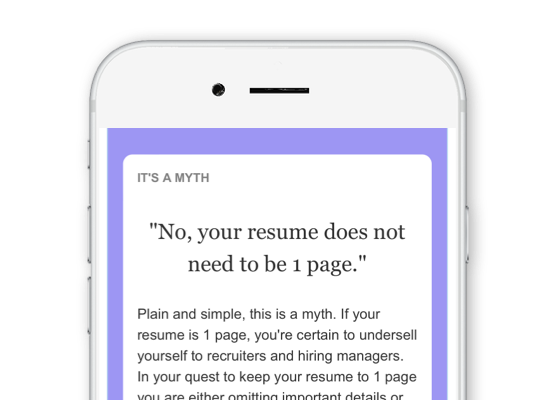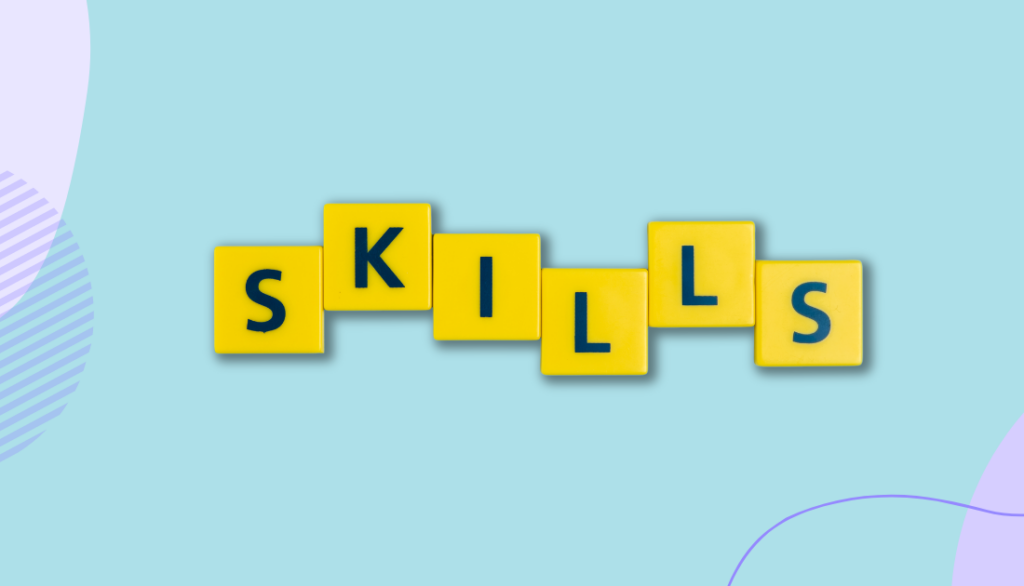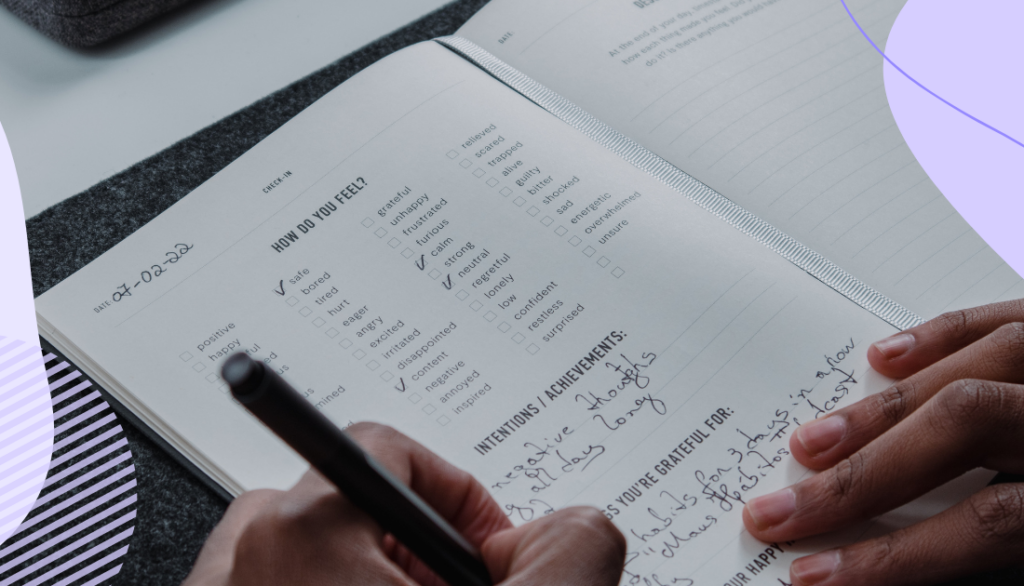Episode 67
How to stop applying for hundreds of jobs – Sarah’s guest appearance on the Honest UX Podcast
49 min listen
Episode 48
49 min listen

Listen to the Episode
Episode Summary
Tired of applying to countless jobs with little success? In this episode where Sarah makes a guest appearance on the Honest UX Podcast, get ready to revamp your approach. Listen into the challenges faced by candidates in the UX job market and share valuable insights on optimizing your job search. Discover how to apply UX principles to your job hunt, tailor your job application materials for success, and build meaningful connections within the industry.
Gain valuable tips on crafting a standout portfolio, effective communication, and networking strategies that work. Get ready to rethink your job search strategy and set yourself up for success in the competitive UX field. Whether you’re a seasoned professional or just starting out, this episode is packed with actionable advice to help you navigate the job market with confidence.
Create your dream career, and life
- Book a free Career Strategy Call to learn how we can help you
- Get our free Career Roadmap to help you navigate your career
- Check out Career Strategy Lab, our 3-month career coaching program
Discussion Questions About The Episode
- How do you think you can change your job application game plan to be more about quality and strategy rather than mass applications?
- After hearing all about tailoring job application materials to match what companies are looking for, how do you think you might rework your approach to crafting resumes, portfolios, and cover letters to better fit what potential employers want?
- When it comes to building relationships with people at companies, how could you revamp your networking game to focus on real connections and personal experiences rather than just using the usual platforms or generic outreach tactics?
- What were the most eye-opening bits of advice about portfolio creation and presentation that Sarah, Ioana, and Anfisa dished out? And how might you use that to amp up the storytelling and evidence-driven aspects of your own portfolio?
- After hearing about the pitfalls of UX education in getting students ready for the real job world, what can be done to step up the post-education support and practical skill-building in UX programs to set candidates up for success?
Episode Transcript
Sarah Doody [00:00:00]: Hey there. I’m Sarah Doody, host of the Career Strategy Podcast. Many professionals are seeking more impact, flexibility, growth, and let’s face it, getting paid what they’re worth. But how do you unlock this in your career? It starts with strategy. I’m taking you behind the scenes of what’s working for my career coaching clients. You’ll hear strategies and actionable, yet sometimes against the grain, advice for how you can be the CEO of your career and stop in Mondays. Ready to level up your career? Let’s get after it.
Erin Lindstrom [00:00:37]: This episode of the Career Strategy Podcast Originally aired on the Honest UX Talks podcast, which is an excellent resource if you haven’t checked it out yet. On the Honest UX Talks podcast, There’s weekly conversations about UX design career challenges, portfolio, mental health, and all things UX. We highly recommend checking it out and hope you enjoy this conversation. To learn more, you can go to instagram.com/honest_ux_talks.
Ioana Teleanu [00:01:07]: Sarah, I wanna thank you for joining us today. We’re super excited to have this conversation. And maybe before we jump into the hot topic we have, planned for today. Maybe tell us a little about how you became such an articulate voice in the UX career space.
Sarah Doody [00:01:22]: Yeah. Thanks for having me today. You know, it was never really on my personal career road map or product road map For my career to get into this space of UX careers, jobs, coaching, Etcetera. It all really happens as an accident, but in hindsight, I can see how my Kinda researcher brain led me along that path. So to kinda rewind a little bit, back in around 2017, I noticed that my inbox and my DMs everywhere were flooded with questions such as, How do I make a portfolio, or how do I get hired and have a portfolio if no one will give me a chance And hire me so I can get experience. Right? It’s the whole chicken and egg situation, and I’m sure a lot of your listeners can relate to that chicken and egg issue. But One thing I realized was after almost ignoring these questions for a while because it was so overwhelming, I finally decided to do something about it. So I did 2 things, and I honestly can’t remember which thing I did first.
Sarah Doody [00:02:41]: I think the first thing I did was I decided to do some YouTube videos, and my very first YouTube video was How to create a portfolio without Experience, and now it probably has 60 or Sarah views. But that got a ton of response, and I thought, maybe I’m on to something. So then I created a Kinda hour long workshop about creating a portfolio that sold out, and then people started to get hired. And then they said to me, This was awesome. Could it be 4 weeks long instead of 1 hour long? And that led me down the path of really creating all these trainings, tool kits, templates, etcetera, now related to every part of the job search, not just the portfolios. Talking out that experience. I’m sure you can see how the researcher in me just kinda, like, led me down this path, but it definitely was not a part of my Career plan, let’s say.
Ioana Teleanu [00:03:44]: That’s fascinating to see how the the path guides you itself. I mean, it just it just takes the shape. It’s it’s supposed to to take in in a very natural way without you having to, like you you just pay attention To the questions that come towards you and that shape the way you articulate your ideas and what ideas you need to articulate. Yeah.
Sarah Doody [00:04:05]: When when I was a child, I didn’t know if you have these books when you were growing up, but we had these books called choose your own adventure. So you read the chapter, and then at the end, it says, you know, if you would want to see What happens to Johnny? If he does this, go to this page. If you wanna find out this, go to that other page. And I feel like that’s kind of why I love user experience so much, and it’s that element of curiosity and almost like being an explorer of life than at least for me. I know where I’m headed, but there’s always unexpected twists and turns, if that makes sense.
Ioana Teleanu [00:04:45]: Definitely. And it’s really beautiful and also relatable. I feel like you’re speaking to my own path in the past few years where I just I feel like something led me down down this road as well. So it’s a it’s a very beautiful way of starting this conversation. And now I wanna jump into something that’s Less beautiful or or is the it’s like the negative side of, the UX industry. And I’m gonna specifically ask you around the Current situation of the UX job market, there are several controversial corners in it and a lot of criticizing that You can bring to how the the industry is shaped right now in the job market. So probably you’re one of the person who knows best what’s going on, what’s wrong With the UX market right now, what what do you think is broken in the UX job market at this moment? That’s such a big
Sarah Doody [00:05:35]: question, and I think One thing to address UX front is the idea that companies slowed down with Hiring because of the pandemic situation we’re in, and I find the opposite to be true. I’ve seen a lot more companies hiring. I don’t have exact data on this, but just anecdotally, I think as more companies went remote, It made everyone realize the importance of better and great user experience, whether it relates to ecommerce or the tools they use on their own, right, to run their remote teams. So I think number 1, there might be this myth that Hiring has slowed down, but I find the opposite. And then to kinda get to the controversial stuff, I think we have to look at this from 22 angles. Right? We have to look at the candidate side, and then we have to look at the company’s side. So let’s start with candidates because There who’s listening, I think, largely right now, and I think some of the things that candidates feel like are broken are There are not enough roles for junior designers. There’s the chicken and egg of how do I get hired and get experience if companies won’t Hire me.
Sarah Doody [00:06:50]: I think there’s the challenge of more junior designers getting hired into companies and then realizing there’s no one there that has the time or space or energy to mentor them. And then I think candidates, You know, they face a lot of competition right now, especially if you’re earlier in your career because The onslaught of candidates being produced by education programs, whether it’s university, college, etcetera, or Boot camp programs, you know, of all ranges. Right? It could be a 1 month boot camp. It could be a, like, 1 year boot camp, but they all result in more candidates applying out there. So there’s a lot of variables at play for those Candidates, I’m curious if any of those jump out to you as ones that you hadn’t thought about or that you definitely see kind of a giant Spotlight being shone upon.
Ioana Teleanu [00:07:48]: It’s a real very interesting question, to to reflect on. I’ve been doing a lot of work myself. I I will be curious to hear on Fisa’s thoughts as well. As our listeners know and probably, you know, we also have our own educational tracks On Visa runs, into UX. It’s a course, a very successful course. I think she has 700 students already. And I also run a boot camp called MENTAL Design Academy. So we’re pretty immersed in this problem space, and we know the realities of how difficult it is For these junior designers to actually land a job once they’re they’re out there after the boot camp or after, even university or, any kind of formal education.
Ioana Teleanu [00:08:29]: So most of the things you’re talking about, speak to us because we we face them, and we actually have to tell very uncomfortable and tough truths to our students all the time. What I would add to your comprehensive list is that the problem is also because of the UX education programs that Kinda advertise false results, quick results, very easy path of transitioning and just, like, milk and honey world where you’re gonna be a UX designer in 3 months, and then all the companies will rush in to hire you. And they have pretty unrealistic expectations, and that’s where the pain comes from When when you you face the reality. And, this this has been my Experience, and it’s something that I’m trying to change through Minto Design Academy. And I’m curious to hear if Anfisa Resonated with everything you shared.
Anfisa Bogomolova [00:09:17]: Yeah. I mean, obviously, yes. Definitely. All of those things happens every every single time somebody’s finishing their program and Say it’s like, oh, well, there is so much work to do now. Like, I just got this education, but now, well, the whole new education starts about How do how do I make my CV or portfolio stand out? What to write in a cover letter? How do you go through the interview? It’s like all this new. It’s like you need definitely a new course for that to actually Mhmm. Make sure you come in and do it prepared because otherwise, it’s definitely very hard to stand out. It’s very hard to make sure you know your worth, especially if you’re coming from, like, this boot camp where process is pretty standard and you’re just trained to learn the process.
Anfisa Bogomolova [00:09:56]: But now, what are your strong sides? How do you tackle solving complicated problems and working with a lot of constraints or, I don’t know, working in the biggest projects and other settings? And so, yes, definitely very familiar. One thing I can maybe add here, is that also some demographics are different from each other. So there are more competitive markets when the competition is more fierce, and I don’t even know how to send out there. Like, it’s not It’s not easy as, you know, here is the recipe and go use it. But there are also some less competitive markets. Interesting observation is that in Czech Republic my first initial assumption was that in Czech Republic, where I’m living at right now, it It should be the same. It should be a problem. It’s very hard to find a 1st job.
Anfisa Bogomolova [00:10:39]: Though, interestingly enough, I noticed that many of my, like, students from Czech Republic Could find a job in within, like, 2 months. I was like, woah. That’s pretty good timeline. How do you do this? And it appeared that in Czech Republic, there are more offers, Especially this last, I don’t know, half year when, you know, companies starting to reopen their positions and unfrozen the hiring. And so It might be that in some demographics well, I guess it’s in Doody news that some demographics have more offers than demands even. But it’s it’s not it’s more of a rare occasion, I guess. So it’s not as easy. It’s still pretty, pretty hard.
Anfisa Bogomolova [00:11:13]: I just wanted to add this little positive note that’s possible. No.
Sarah Doody [00:11:19]: It’s it’s great to hear that the people in the Czech Republic are having such fast results to getting hired, And you mentioned a few things that I wanna just point on. I think the theme that we’re all kinda getting at is, like you said, Many of the boot camps, I almost feel like they just treat candidates like factories, like, to be honest, because we’re on honest UX talks. But I really do feel like some of these boot camps are created by tech bros who just wanna get on the boot camp train and then They make all these promises, like, you’ll get hired or you can join our boot camp, don’t pay us any money, and then you will pay us back after you are hired. And it’s just it’s it feels very icky, and all of the promises Just don’t set people up for the real world. And I think if people are listening who are currently in a boot camp or Thinking about a boot camp, number 1, make sure you do your homework before you join 1, but number 2, Have really realistic expectations and know that user experience is not just about memorizing processes, learning software, knowing how to do the latest process of the week because it seems like people are renaming processes and methods, You know, all the time just to get more Twitter followers or something and, like, realize there’s a lot more than just software and processes and and methodologies.
Ioana Teleanu [00:12:52]: Definitely. We stand by that. We are also a big, big advocates of of, these ideas and actually understanding that UX is much more than just going through 5 stages and then creating a portfolio where you tell everyone That you’ve been through the UX checklist, and you did the persona, and you did the customer journey, and this is what I learned, and hire me. Yep. It doesn’t work like that.
Sarah Doody [00:13:15]: And the other thing I would say is back to what what I focus on because it’s funny. Over the years, many people have come to me and asked me if I would Create a boot camp or make their boot camp curriculum. And side note, I did back in 2011 or 2012 well, and 2012, Create General Assembly’s 1st version of their, I forgot what it was, but it was the 11 or 12 week immersive in New York City. And although I am passionate about UX education, you know, when I was accidentally falling down or going down this path of of UX career education and such. I realized there’s a lot of people already doing boot camp education and UX 101 and all that stuff, and I realized not many people were focusing on how to What I now refer to as, like, treat yourself like a product. And as I said in the beginning, have a product road map for your career. Know how to articulate your work, create a portfolio, create a resume, conduct a job search, prepare for interviews. Like, all those things that come after your education.
Sarah Doody [00:14:26]: So that’s what I’m really focused on, but I feel like A lot of these boot camps and even university programs, a, don’t teach it, or, b, treat it like an afterthought, and their solution is just to have, quote, mentors, whatever that means, or people who recently graduated, you know, just have endless Coffee chats with each other and go through it. And my whole program is really rooted on You don’t need more conversations and pep talks and things. You need the detailed set of instructions to help you take action to do all of these things. So should we flip over to companies though and what’s broken over there?
Ioana Teleanu [00:15:10]: Absolutely. That’s another interesting angle that we definitely wanna learn more about.
Sarah Doody [00:15:15]: Yeah. So for companies, it’s really interesting because I just pulled up some research on my big monitor here, but I have been very focused on the Candidate side of this problem, right, and ensuring that candidates are more prepared so they can get hired faster without applying to hundreds of jobs. And many of our testimonials say that. I mean, not literally, but, if we were to paraphrase, People are no longer applying to hundreds of roles. They apply to a handful of roles. But now I’m starting to do some research with people involved in UX Hiring at companies whether they work in HR or they are, like, the VP of the department or whatever. And so Some of the themes that I have been hearing from them are that they are frustrated when candidates apply for roles that the candidate is clearly not not qualified for, which goes back to the whole idea of applying to hundreds of roles because I feel like a lot of times candidates right now are just we have this phrase. I don’t know if you have it, but throwing spaghetti at the wall so you just See and throw all these options and see what happens, and that’s what candidates are doing with their job search.
Sarah Doody [00:16:31]: And I think part of it is because It’s so easy for candidates on many of the job platforms to just click, you know, click apply or whatever the button says, and that causes issues on the company’s side because I just talked to someone the other day, and I think they said they had, like, 500 people applied for some junior UX role, and a lot of them were just clearly not qualified or just had cookie cutter portfolios that just showed deliverables and didn’t show knowledge or thinking. So companies suffer from Overwhelm of candidates, quality of candidates, another problem companies have, and this is more related to companies that are not a FAANG company, but I have a list of companies that are hiring or have paid internships, And they’re not a FAANG company, but they would be amazing to work at. And I think there’s this shift that needs to take place on the candidate side of not being obsessed with working at a FAANG company because I think gone are the days of a FAANG company, you know, helping you stand out and being a a badge of honor you must achieve in your career, let’s say, because there’s so many other Companies in different industries, etcetera, that would be amazing opportunities to go to and gain experience and learn a ton. So that’s just something to think about for candidates as well. Broken on the company’s side also, I think I mean, let’s be real. A lot of times, the job descriptions that companies put out are inaccurate, have titles that don’t really make sense, and this is something that candidates really love to complain about on Twitter and everywhere else. My attitude is, like, You can continue to spend your time and energy complaining about that or focus on the things that matter, like making a better resume or something, But I think it’s fair to acknowledge that companies have some work to do around how they talk about the roles they’re hiring for, etcetera. And then the other problem that I think needs to be addressed is the kinda equity of the hiring Process.
Sarah Doody [00:18:49]: Right? So many companies make candidates, especially UX candidates, jump through various hoops, like Do this design exercise at home before you come to the interview. It’s the whole, you know, debate about whether or not you should do those types of activities, But I think it comes down to, like, is that creating a fair hiring process? Right? Not everyone has extra time to do those things. So in 2022, one of the things I’m really focused on is that other side, which is the company side of things because I’ve really honed in a solution for candidates in terms of making them ready to apply with amazing materials and such. And now I’m beginning to work through some of those Can’t those company problems, but it’s a lot of work, so I don’t know which one we’re really gonna tackle first. I’m still kind of in research mode, to be honest, but It’s a lot of fun.
Anfisa Bogomolova [00:19:48]: I just wanted to add because, like, it’s a it’s a problem that I constantly discuss with my peers. The I have some friends who are also design managers who are hiring, and they also complain a lot about, you know, I’ve got the senior role, but since While there are out out there, they are mainly on the senior roles. Like, you can find, I don’t know, 20 senior roles and 1 junior role in the market It’s right now, usual. I don’t know. The I think the ratios are different everywhere, but in general, you would see much more senior roles. Everybody needs experienced designers. And so they would complain a lot about that you would have so many juniors applying to senior roles. But that’s, again, the problem of Chicken egg and egg knowing that there are not enough of the offering.
Anfisa Bogomolova [00:20:27]: And, again, the markets are different, obviously. Of course, the competition is different as well, but Point is it’s very understandable why it is happening because if we imagine ourselves being, you know, aspiring designers just out of the boot camp or whatever, Trying to find a role and you go into market and you find, like, I don’t know, one role where 500 people applied already. And then you would see, like, 20 other senior roles that stand there for, like, 2 months and nobody’s you know, it’s not being closed, so, obviously, they’re still open. You’re trying your luck. You’re trying if you can get it there. You you’re Trying to cut your way or maybe item, fake it till you make it or whatever. Everybody is, like, just brilliant trying to figure it out. And I see why it is happening.
Anfisa Bogomolova [00:21:05]: And, obviously, this ratio, it’s one of the biggest Problems which I honestly don’t know how to solve, and I’m really excited to hear that somebody’s trying to understand what’s going on from market perspective as well. So it’s definitely a big thing I wanted to make sure we cover today as well.
Ioana Teleanu [00:21:19]: It’s actually very interesting to listen to this angle as well because most of the times in in our in our work, We’re pretty close to the candidate’s perspective, and there’s this, general tendency of demonizing the companies and Yes. Yes. There are, awful hiring practices, and the process is not optimized. And just like you said, all the issues, with the take home assignments and, job descriptions that are broken and so on, but at the same time, there’s a person that’s behind all that. And since we’re designers, why not build the Famous empathy that we use so freely. Why not build empathy for those people who are actually trying to hire the right person for the job? And maybe they just need Guidance where they need. For me, it was always probably interesting to explore, but it feels so daunting that I don’t know who. I think you’re Really brave to go ahead and and try to understand and unpack that problem space and try to do something about it.
Ioana Teleanu [00:22:16]: I We support you, and we applaud this. I think it’s great that you’re on it. And, yeah. But To maybe go a little back in the candidate’s shoes because that’s where where you feel most comfortable, in this conversation, let’s See, what are from your perspective the most common mistakes that candidates make in the job hunt?
Sarah Doody [00:22:41]: Yeah. So I think it’s It can be kinda divided into 2 sections. Section number 1 is mistakes around how they present their self and their, what I refer to as, career materials. So their resume, portfolio, LinkedIn cover letters, like, all of those things that form that first impression, and then I think there’s the Sarah part of The actual job search. So let’s talk about those career materials first because I think a lot of people listening are probably Currently working on those or trying to figure out why maybe they aren’t getting interviews and where the problem might b, and is it your resume? Is it your portfolio? Etcetera. So the kinda really overarching problem I see Is that a lot of people do not know how to effectively communicate in a written format. I mean, to be at the 30,000 foot view of this conversation because a lot of what we do inside career strategy lab is Teach you how to write. So for example, with your resume, like, we have a bunch of lessons on What makes a good resume bullet point? Better.
Sarah Doody [00:23:58]: Best resume bullet points. And it was amazing in the beginning For me to realize that no one knew how to do this because it comes through naturally to me, but that’s kind of the, quote, expert, phenomenon, I guess. Right? Like, things you are very natural at. That’s why people consider you an expert. So teaching people how to communicate, super, super important. And then I think the other big mistake people make is not just showing the deliverable or stating literally what you did, but articulating the details of that and your decision making behind that so let me give an example so this is really tangible for people. Last week, we had a vice president of user research join us inside career strategy lab for these things we do called portfolio demo day, where, people get 10 minutes to present their portfolio, and then we give 10 minutes of feedback. So 1 person was presenting a research portfolio, and one of the slides said something along the lines of, next, I interviewed 23 stakeholders and did usability tests, something like that.
Sarah Doody [00:25:13]: And then on that slide, It showed some sample questions that they asked for the interview and tasks that they had them do for the usability test, and then it moved the next slide was and here’s what we discovered. But let’s focus on that specific slide. So just saying, I did user research interviews with 23 people and did usability tests. That’s good, but that leaves a lot of questions in someone’s mind. So if you want to stand out as someone not just who can say they do usability tests and interviews, but prove to us or provide evidence that you did the right things to achieve that outcome, if that makes sense. So as an example, This person could have added details such as why did you choose to do that research method in 1st place. Right? Why was interview and usability testing the best option? Why not a survey? So why did you choose that method? Then how did you find and what were the criteria for those 23 people? Right? Like, what was What was the strategy behind choosing those people? And then maybe even details like the software you decided to use for the usability testing if there with software involved. So that’s what we mean when you see tweets and medium articles, you know, all day every day about tell the story, tell the story.
Sarah Doody [00:26:42]: Telling this story is not, I did usability testing, and then I made an affinity map. That’s another one. Sony portfolios say, like, Next, we made an affinity map, and then there is a diagram of an affinity map, and that’s it. And it’s like, well, great. I know that you went to Miro and grabbed some affinity map template and put a bunch of Post It notes all over the place and moved them with your hand with your mouse. You know? But I don’t have confidence yet that, like, you thought through the details of why things are in each quadrant and It’s UX. So I I I wish I could ban the phrase, like, tell a story, show your process, because I’m so sick of hearing that, and that’s, I think why people gravitate to move towards me because I actually go into the details of how to actually tell this story and show your process.
Anfisa Bogomolova [00:27:33]: I just wanted to say that I usually would differentiate those as, like, showing the report you did and telling the story, like, What’s your thinking process and all that? And I definitely see how many people are doing the reporting thing. Like, here is the exact steps I went through. It’s definitely copycat all over places all the time.
Ioana Teleanu [00:27:51]: Yeah. Cookie cutter. I like to call it the checklist portfolio.
Anfisa Bogomolova [00:27:55]: Yes. Exactly.
Sarah Doody [00:27:56]: It it’s true, and that brings up 2 more points. Hopefully, I can remember both of them. One of the points is a lot of UX people, For whatever reason, and I would love to know who is spreading this lie around the industry, but it’s the idea that your portfolio must, Like you said, check every box of the UX process. It has to go through the double diamond process or the human centered design process, whatever you call it. And my attitude is not every project in every portfolio needs to show each tick of the box of the double diamond process, let’s say, because a user researcher, for example, like or a UX writer, you know, they may not have high fidelity designs. You know? So I think we need to stop obsessing about that because I think that’s why a lot of people are spending really a lot of time working on fake projects, mock projects, whatever you wanna call them, so they can show evidence in every project in their portfolio of this ticking of every box. The other kind of problem I see candidates make, it goes back to how they talk about their projects. If you’ve been to a UX education or boot camp program, You probably have some presentation that you made about each project you worked on, but Who was the user or stakeholder of that presentation? It was your instructor.
Sarah Doody [00:29:28]: Right? And the point of that presentation is to demonstrate to your instructor that you know and learned all the things you’re supposed to know and learn. A lot of people, You try and use those exact same presentations as their portfolio projects. The problem in my mind, and I hear this quite often from hiring managers and such, is that they’re not the same user. Right? So a lot of times, these presentations made for a boot camp, let’s say, will say something like, Next, we made personas to help us empathize with the users and understand their problems and needs. Like, if you Google that, It’s probably in tens of thousands of portfolio web pages. The problem with that statement that I just made is The person hiring you doesn’t need you to waste their time telling them the definition of what a persona is. They want to know the research that led to these personas and what are some of the key Tasks are like, how do these personas relate to the user flows you’re going to focus on? Things like that. So affinity maps are another one.
Sarah Doody [00:30:37]: Like, at the Top of the page, it will say, next, we made an affinity map to find and organize the themes. And it’s like, well, obviously. But What were the themes? You know? So that’s just I’m kinda ranting, but it’s a big one. And hiring managers, AVP of research from Chase, said this almost verbatim last week. Like, your your portfolio doesn’t need to sound like answers to, questions on a UX exam.
Ioana Teleanu [00:31:05]: We strongly we definitely relate to that. I mean, yeah, it’s it’s a rant that we probably have experienced in our minds as well, but you said it Beautifully. I mean, it’s just it’s just, very compelling to listen to you because you put things very well into place. It shows that you’re the expert in this issue. We’ve been we’ve been kinda circling around, arbitrating these themes in our podcast, but I feel like today, we kinda nail them down, like, very, very clearly stating the issues and what’s wrong with with the UX these days from the angle of The job market and, the job hunt and portfolios and everything. So we know what’s wrong now. We’ve explored some of the issues that are out there, the mistakes make the issues with companies and everything. I think we’ve been through some very interesting perspectives in this conversation already.
Ioana Teleanu [00:31:56]: But now let’s move into the positive side of things. So my question to you, Sarah, is Doody people need to apply to 100 jobs, or is there a smarter way To go about this process, what can they do to optimize? What are your tips and tricks for for someone who’s looking to land their UX first or not not necessarily first UX job, a better UX job.
Sarah Doody [00:32:18]: Yeah. So so much of our conversation today, there’s so much irony because A lot of the mistakes that we make, we would not make them if we were applying UX and product management and product strategy principles to this very situation. So, You know, looking at the job search, for example, imagining if there was a product manager for your job search and you applied to a 100 roles or, like, Fifty roles and didn’t get any interviews. That product manager would probably kinda raise a little yellow flag and say, woah. Before you apply to job 51, let’s kinda check-in. Like, that’s what product managers do a lot of times. Right? It’s what, You know, even if you’re not a product manager, at least me personally and the UX work I do, I’m always thinking about, like, is this working? Is it not? Should we keep going? Should we step back? So question number 1 really is what’s the strategy for your job search? And My attitude is you should apply to less jobs, but put more care and attention into those jobs you apply to. So what does that mean tangibly? First of all, it means reading the actual job description, Honestly reading it.
Sarah Doody [00:33:34]: And then after you read it, determine the likelihood that you match up to that. And if you’re not sure if you’re on the fence, Ask someone you worked with or, you know, that you trust to see what their gut reaction is. If there’s a couple of things on their requirements list that you’re worried about, Maybe get a second opinion. The other thing to think about is before you even, I think, start searching for jobs, You need to make what I call career value criteria list, which means, what are you looking for in a company? What are you looking for in a team? What are you looking for in a boss? It’s almost like if you’re looking for a partner, you know, you might have a list of things that you want and would maybe compromise on and this, that, and the other. It’s the same for a company and your career. If you do that, you are going to minimize the likelihood that you get kind of wooed by some opportunity and then get hired and think, Oh, man. Like, I hate this company culture or something. So get clear on your goals, needs, wants as a Person seeking a job.
Sarah Doody [00:34:44]: When it comes to actually applying to those jobs, though, simple things like customizing your resume, Customizing your portfolio, writing a cover letter, and it doesn’t need to be, like, a 1000 words long. I just had this conversation with a hiring manager the other day because there’s debate everywhere. Right? Our cover letter is Doody, and You have to think of the function of a cover letter. So the function of our cover letter is to Highlight the top things that someone would need to know about you. Like, imagine if they didn’t read your resume or open up your portfolio. What do you want them to know? That’s what should be in your cover letter. Ideally, you connect your skills and experience to how that could relate to them. Like so for example, if you were previously a flight attendant, and now you’re switching into user Experience.
Sarah Doody [00:35:42]: And you are applying to a company like Hotels .com or Like KLM Airlines or something. Great. That cover letter is an opportunity to connect the dots between your experience in the travel industry and that domain knowledge that you bring to that travel company you’re applying to. So when it comes to Customizing resumes and portfolios note, I know a lot of people are probably thinking, that’s so unrealistic. How do I make time to do that? And When I say customize your resume, for example, I don’t mean rewrite the whole thing from scratch. I mean, You might just be rearranging the order of bullet points, adding a bullet point, removing a bullet point based on that company you are applying to, and same thing with your portfolio. I personally teach everyone in career strategy lab, your portfolio needs to be a presentation, a PDF, which is why it makes it easy to then customize it because in a PDF, you can just drag project 3 up to Be the first one instead of the third one or project 2 down up to be number 1 if project 2 is super, super relevant to that role you’re applying to. So, ultimately, like, apply to less roles, be clearer on the roles you’re applying to, Tailor your materials, and then I would say focus on relationship building with people at the companies you apply to or wanna work at in the future because that is a big part of either getting hired or knowing that jobs exist.
Sarah Doody [00:37:23]: Like, just go on LinkedIn and do a search for hiring a user researcher or hiring a designer, and what you’ll see is People posting that their teams are hiring. And then guess what? Go connect with them. Send them a message. Comment on the post. And That’s how many people in my program end up getting kind of a foot in the door.
Anfisa Bogomolova [00:37:45]: I I like the fact that you’re saying, like, tailor it. They don’t just apply to anything you you don’t even check. I also feel like the one thing we’re missing or many people are missing is that, yes, industry. True. Yes. If you have to show the cases that are relevant to the industry or at least a challenge that is similar, maybe facing similar user base. But another part of it is also trying to understand what companies you’re trying to apply because we sometimes miss the fact that if you’re applying as a freelancer, it’s one kind of a Job, you’ll have to use different size of skills than it’s if you’re working in the enterprise culture or if you’re applying for a startup or if you’re applying to design agency. They all might look for different skill sets or different kinda soft skills you’re you’re having or even, like, the personality types or interests, etcetera.
Anfisa Bogomolova [00:38:27]: So it’s one thing. If you’re just applying to any, like, if there’s, let’s say, bucket of all those job posts, they will all have different needs. And and, like, you’re definitely losing your time applying to Some like, especially if you have, like, this generic portfolio, I can do everything. I can do videography, and I can do photography, and I can do UX and UI, and then why not coding. Yes. It’s like it is it’s just minimizing your chances with every single new line of what you can offer. And so this is something we should So try not forgetting that it’s like the more you tailor it, the more better fit you are, the more chances you probably will get at least get into the 1st stage in talking to your design manager to them making a better impression. Think of
Sarah Doody [00:39:07]: what we do on a day to day basis with the products we design. Right? Like, let’s imagine a dashboard. What makes dashboards great? It’s when they’re personalized. And so when we work on products, we obsess about creating, like, personalized experiences based on the research and all the wonderful personas and all this. And why aren’t we doing the same with our portfolios and resumes, etcetera, and trying to create a personalized experience for those people, our stakeholders, You can even maybe call them customers that are hiring us. You know? And I think that in the same way that candidates want the hiring process to be more human, and, you know, there’s all the complaining that happens. The change kinda has to start with you. Make a presentation of you, more human and more more personable.
Sarah Doody [00:39:55]: And one thing I tell everyone in career strategy lab when they get to their job search is that you have to prioritize people over platforms. As tempting it is as it is to just rely on LinkedIn and Indeed and all the job boards and things, it’s far more likely that you’re going to find roles And then be able to find people at those companies if you are following people on Twitter that work at the companies that you wanna work at or go Follow them on LinkedIn. See if they’ve written any Medium articles or blogs or have a YouTube channel or something. That’s how you’re gonna hear about roles, and then you’ll also have a person attached to that post, and you can follow-up and have a conversation, which oftentimes leads to either the opportunity to learn more about the role in the company, right, so you can decide, do I really wanna apply to this job? Or once you do apply, You now have contact with someone on the inside that you can follow-up with questions or ask about the status, etcetera.
Ioana Teleanu [00:40:59]: I wanted earlier to just Jump in and applaud this point about, just clap for the idea of networking and and reaching out to people directly, and I think that there’s a general reluctance towards doing that because sometimes people fear, what if I’m spammy? What if they get, like, hundreds of messages? What if you don’t have to be spammy. I think that you can do it in a very intentional, meaningful, A careful way. And if you, like, just connect to these people and you reach out to them contextually, like, When like you said, when they share the job posting, that’s the right moment to tell them, hey. I might be interested in this and and not just Send out a mass message when you say, hey. This is me. I’m a I do product design, and please hire me. That’s not the that’s spammy. But if you go in an intentional way towards them and just cultivate this honest, relationship with those people, that’s totally possible.
Ioana Teleanu [00:41:54]: I mean, People sometimes fear reaching out to, like, a cold message to someone they don’t know, but it’s so important.
Sarah Doody [00:42:02]: I’m so glad you brought that up because we have this whole series of lessons inside career strategy lab about How to cold email people at different stages, you know, before you’ve applied. You applied, and now you Found someone there. You wanna let them know you applied, and I agree. There is this major fear around putting out these, messages, but I think, you know, it it kind of boils down to common sense and being intentional. And for example, so often on LinkedIn, I’ll see a hiring manager say, hey. My team is hiring for this, that, the other roles. And then in the comments, without fail, people will reply and say, I’m interested. Can you let me know more? And I’m like, no.
Sarah Doody [00:42:51]: Like, they’re busy. You need to send them a message. That message better not say, Hey. I saw your post. I’m interested in the role because what does that say? It feels very lazy. What I teach in, like, 10 seconds is You need to go in with a question or some connection. Like, pitch yourself. You’re a travel company.
Sarah Doody [00:43:16]: You’re hiring a UX person. I’m the flight attendant that used to work in travel, and I have 10 years Experience, and that’s why you should hire me. So, Yeah. It’s it’s a larger conversation, but I totally agree. And even that research person from Chase that I mentioned, we talked about this, and he said, Yeah. I get a lot of messages that are exactly that. Can you tell me more? I’m interested. The ones that stand out are the ones that connect those dots or shine the spotlight on why that candidate is Doody, or They’d have a simple ask, like a very clear question and not just, hey.
Sarah Doody [00:43:53]: I’m interested. Can we have a coffee chat so I can pick your brain about this role? It’s like, that’s the worst type of message.
Ioana Teleanu [00:43:59]: I totally agree, and I’m happy that we also touched on this point because I think it’s a very nice note on which To to beautifully end our conversation because we we’re ending with the human aspect of the entire document and how important that is. Just not treating it as a numbers over over quality and I think would be the main takeaway for people to, like, not optimize for to hundreds of jobs, just like the title of our episode informs, but be mindful about everything you’re doing. Be intentional. And I just feel like we we we have So many nuggets of wisdom in this episode, Sarah. I’m I’m so excited. And, typically, what myself and Amphisa do is, like, we do a top 3, finding or insight from this episode, but we’re not gonna do it now because everything is an insight. I mean, every line you shared with us is an insight, And I just wanna invite everyone who listened to this episode to just listen to it again. I I do believe that it’s an episode worth, revisiting from time to time and and definitely worth a second listen because it’s packed with value.
Ioana Teleanu [00:45:03]: This is this is my feeling, and I also learn a lot myself. So thank you.
Sarah Doody [00:45:07]: And I have a few, articles and Twitter threads that I think would be really interesting to link to because Couple of the Twitter threads are questions I ask to hiring managers, and there’s, like, a ton of comments below them, so I think it would be a great resource to point people to after, so I’ll make sure to get those to you.
Anfisa Bogomolova [00:45:25]: Thank you. We will actually add those under the show notes. So if you’re interested to check them out, just scroll down and you’ll find there.
Ioana Teleanu [00:45:31]: Yeah. So with this, I just wanna thank you so much, Sarah, for coming in and and sharing your wisdom with our audience, with ourselves. Like I said, I also learned a lot, and it helped me put some things into perspective. And I feel like I can articulate what’s been on my mind for so long, and I wasn’t able to, like, Pinpoint and stated clearly. And, it was a very nice conversation, and it felt very honest. And and you’re truly an expert on how to how to become better at at landing jobs and and showing up confidently in this process.
Sarah Doody [00:46:03]: Thanks for having me. I I I love talking about this, and I think our conversation was really interesting because we all bring such a different perspective, not just from, the people that we’re working with in terms of students, clients, just the geographic difference as well. You like You said there’s differences in hiring and expectations depending on where you are, so I think it’s really great to talk about the similarities and differences.
Ioana Teleanu [00:46:32]: Definitely super interesting. Thanks again.
Anfisa Bogomolova [00:46:34]: Thank you everybody for to who tuned in for this episode.
Sarah Doody [00:46:38]: Thanks for listening to the Career Strategy Podcast. Make sure to follow me, Sarah Doody, on Twitter, Instagram, YouTube, or LinkedIn. If anything in today’s episode resonated with you, I’d love to hear about it. Tag me on social media or send me a DM. And lastly, if you found this episode Helpful. I’d really appreciate it if you could share it with a friend or give us a quick rating on Spotify or review on Apple Podcasts.
